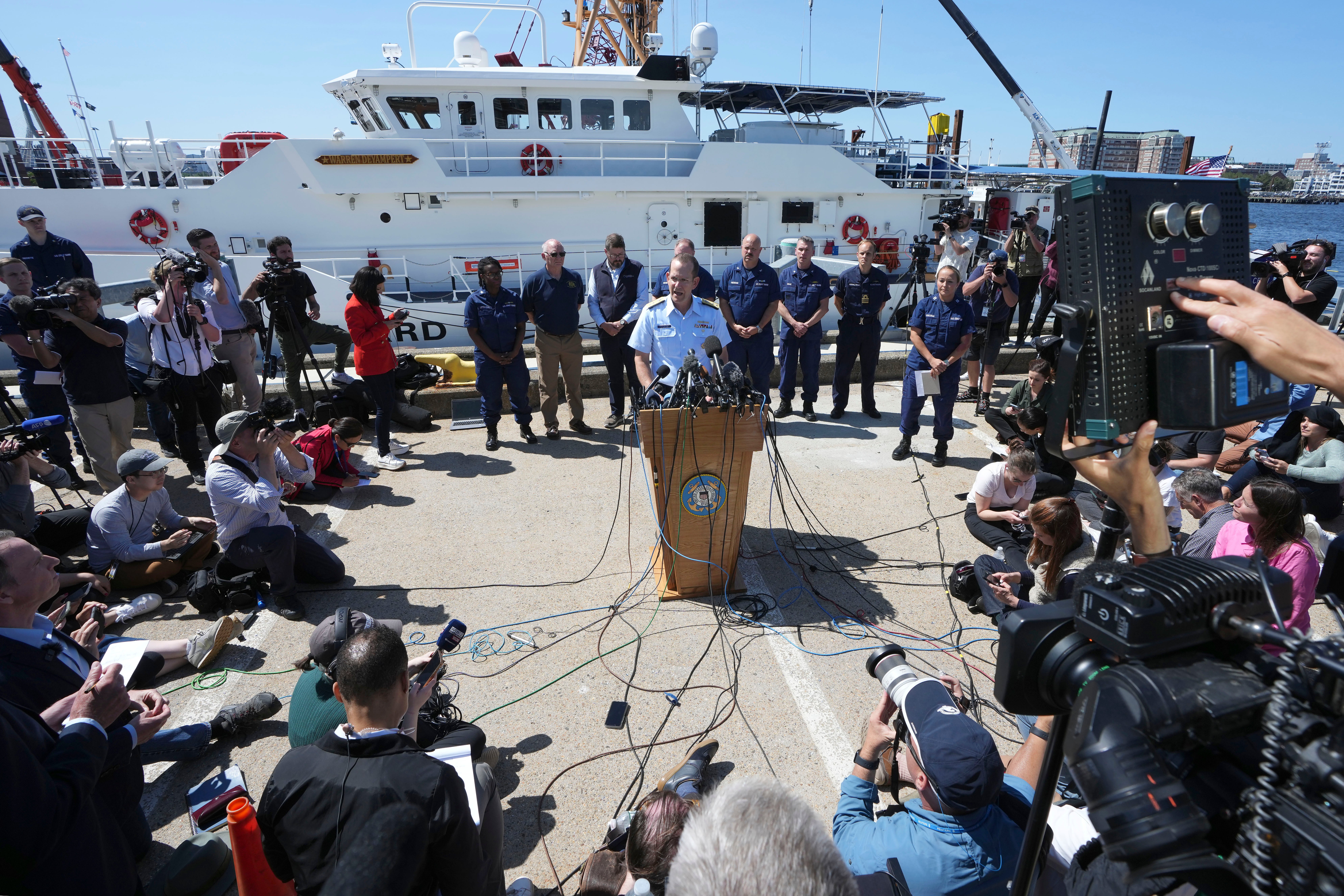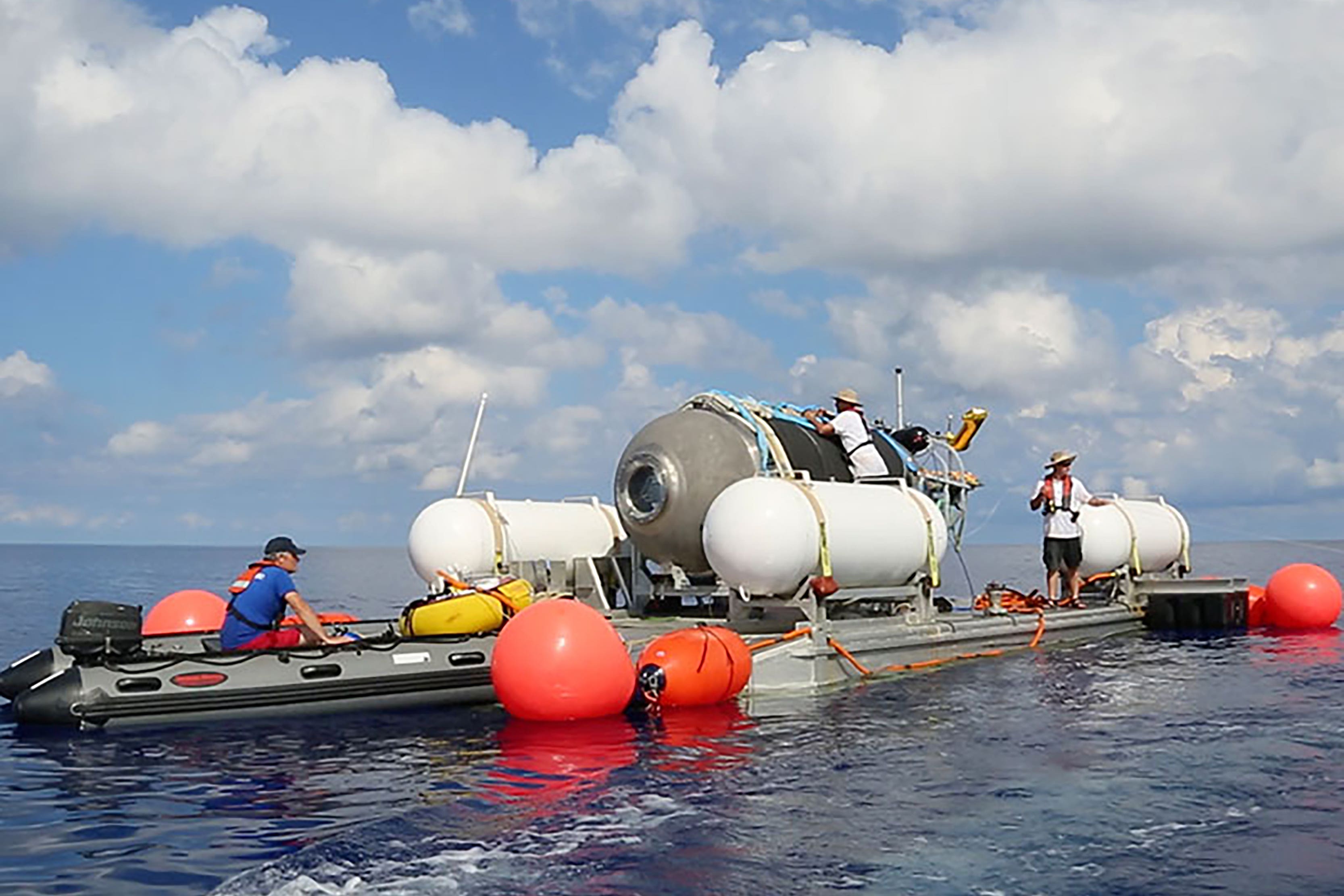‘Like crushing a tiny can of soda’: How pressure under the sea caused the Titan submersible implosion
Five people died on the Titan submersible last week after it went missing under the wreckage of the Titanic in the North Atlantic
Your support helps us to tell the story
From reproductive rights to climate change to Big Tech, The Independent is on the ground when the story is developing. Whether it's investigating the financials of Elon Musk's pro-Trump PAC or producing our latest documentary, 'The A Word', which shines a light on the American women fighting for reproductive rights, we know how important it is to parse out the facts from the messaging.
At such a critical moment in US history, we need reporters on the ground. Your donation allows us to keep sending journalists to speak to both sides of the story.
The Independent is trusted by Americans across the entire political spectrum. And unlike many other quality news outlets, we choose not to lock Americans out of our reporting and analysis with paywalls. We believe quality journalism should be available to everyone, paid for by those who can afford it.
Your support makes all the difference.An expert has revealed why a submersible may have suffered a ‘catastrophic implosion’ under the wreckage of the Titanic last week after five people died.
An undersea robot found debris from OceanGate’s Titan submersible vessel around 487 metres from the Titanic’s bow at the wreckage’s depth of 3.8 km after it went missing on Sunday.
The submersible had set off with five divers inside looking to explore the wreckage of the Titanic but it had lost contact with the US coastguard one hour and 45 minutes into the dive.
It had travelled to the depths of the North Atlantic with five men on board - but the US coastguard concluded it had suffered a ‘catastrophic implosion’ at such depths, eliminating any hope of rescuing the people inside.
Officials investigating what happened have said it’s too early to work out exactly when and how the implosion happened.
But conditions on the ocean floor can give some clues as to how such a tragic event occurred.
Why is there so much pressure in deep water?
Everyone is exposed to atmospheric pressure, and this changes depending on how high up you are and whether you’re at ground level or under water.
This pressure has been described by the American Museum of Natural History as a long column of air above your head that’s reaching to the top of the atmosphere and pressing down on you.
If you go higher, for example, if you climb a mountain, less of that column is pushing down on you, hence the air pressure is lower.

When you get to sea level, the pressure is described as one atmosphere, which is about equivalent to one kilogram of weight pushing down on every square centimetre.
Once you get under the sea, the column pressing down on you increases significantly because you also have to contend with water, which is far heavier than air. The pressure increases by one atmosphere for every 10 metres of ocean depth.
What may have caused the ‘catastrophic implosion’?
By the time it reached the Titanic wreckage, the Titan submersible would have been facing a pressure of between 375 and 400 atmospheres.
That’s equivalent to 4,000 tonnes pushing on an area of one square metre, according to associate professor Eric Fusil, director of the Shipbuilding Hub at Adelaide University.

Professor Fusil described this pressure as like “crushing a can of soda to the size of a very small marble in your hand”.
The professor told the Sunday Morning Herald that the implosion which destroyed the Titan submersible was “a phenomenon where, basically, you are crushing a pressure vessel from the outside”.
Professor Fusil continued: “It results in the instantaneous implosion of that vessel, killing everyone within 20 milliseconds.”
The human brain, as Professor Fusil describes, isn’t able to process information that quickly, and so no one on board would have realised or known what was happening.




Join our commenting forum
Join thought-provoking conversations, follow other Independent readers and see their replies
Comments